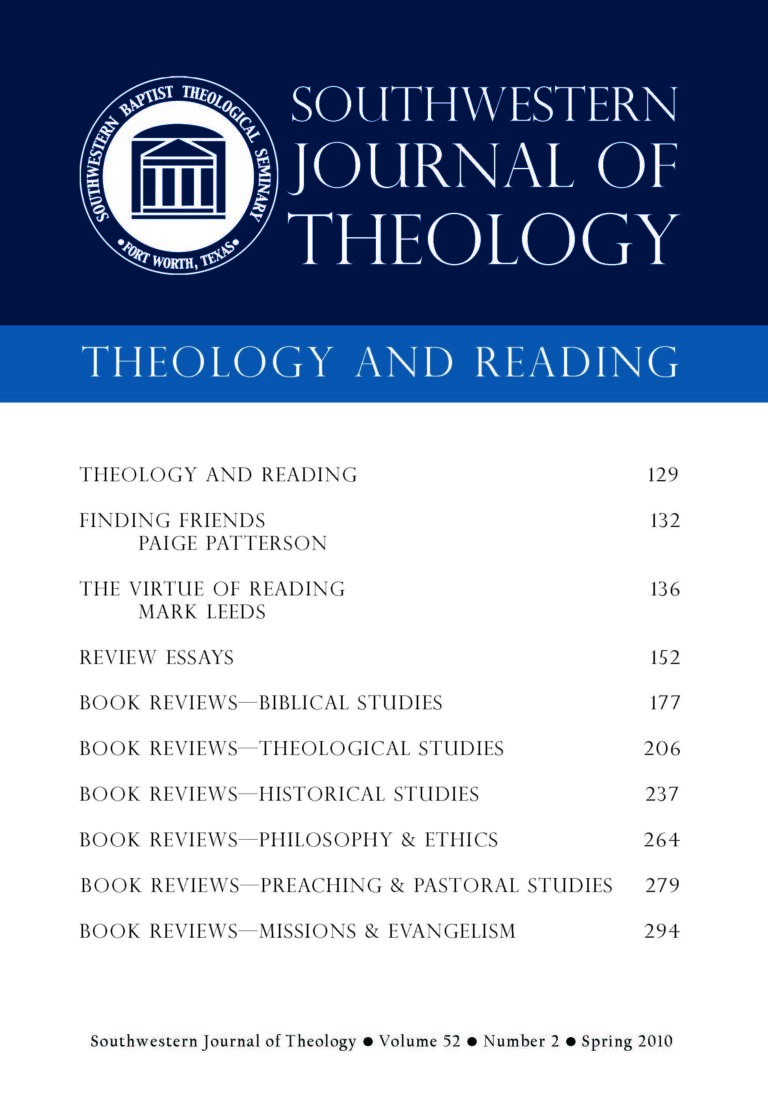
Theology and Reading
Southwestern Journal of Theology
Volume 52, No. 2 – Spring 2010
Managing Editor: Malcolm B. Yarnell III
By Seyoon Kim. Grand Rapids: Eerdmans, 2008. 228 pages. Paperback, $24.00.
“Give back to Caesar the things that are of Caesar, and to God the things that are of God.” These were the weighty words that divided Christ’s kingdom from that of Rome, which at the time was under Tiberius’ rule. In recent years, there has been a surge of scholarly interests regarding the tension between the imperial rule and the kingdom established under the reign of Jesus Christ, the Messiah. With Christ and Caesar, Seyoon Kim, professor New Testament at Fuller Seminary, provides an analysis and assessment of recent trends that juxtaposes Christ and the Roman Empire in the canonical writings of Paul and Luke.
The book is divided into two main sections—one for Paul and another for Luke. Rightly framing both of these sections is Paul’s clash with Caesar in Acts 17:6–7, where Paul and Silas are accused of “acting against the decrees of Caesar, saying that there is another king, Jesus.” The tension is thus assumed to exist. Kim gives an account of the developments of research. As early as 1971, E. Judge described Paul’s possible subversion of Roman edicts, by proclaiming a future parousia, which hailed Jesus as ruler. Since the eighties, scholars concluded by examining the Thessalonian letters that the inhabitants of the city had deep commitments to the imperial cult, especially toward honoring the Roman benefactors (Donnfried, et al). Currently, scholars are pointing to a parallelism of cultic ideology: for instance, the parousia of Christ in 1 Thessalonians 4:17 resembles a majestic ceremony, strikingly similar to descriptions of imperial visits. These similarities suggest that the coming of Christ will conquer the earthly realm as well as Rome. There are also implicit counter-imperial tendencies in Thessalonians with the offering of a different eschatology (Harrison), or with a criticism of Roman aristocracy (A. Smith). Wright identifies Philippians 3:20–21 to contain a proclamation that Jesus is Lord, and Caesar is not. Kim notes these developments in historical studies.
Kim’s response to many of these efforts is summed up with “parrallelomania,” an expression originally coined by S. Sandmel. While the historical studies attempt to find parallels and connections with the data in New Testament writings, Kim suggests that recent studies have been overreaching with their conclusions. In addition, Kim also notices faulty reasoning: deductions from assumptions, proof-texting, and uses of so-called anti-imperial codes in Paul’s messages. Kim concludes that an anti-imperial interpretation is difficult because there is no reference or critique of the Roman Empire,and Romans 13:1–7 is an appeal to Christians to be subject to Roman rule. Paul complies with the Roman authorities and makes appropriate defenses of his conduct. His preaching of the gospel simply awaits the coming of Christ.
As for Luke-Acts, Jesus’ ministry is defined in terms of his work of redemption toward his people, which includes, among others, no overthrowing of the Roman Empire, no literal restoration of the kingdom of David, and the exclusive saving of a redefined Israel, the eschatological people of God. The focus of LukeActs is not a political resurgence of divine power on earth, but a deliverance from the kingdom of Satan. While the gospel details Jesus’ life and ministry, Acts consists of a history of the church in the “continuous work of salvation in the power of his Spirit and through his apostolic church” (Acts 1:1–2). Towards the end of this section, Kim underscores the lack of any real tension between Christ and Rome with his emphasis on the pax Romana, which Kim sees to be playing a key role for an overall conducive setting for apostolic missions.
Jesus’ famous words teaching the disciples about paying taxes are not intended to wage war or displace the political regime. Christ does not compete with Rome, but distinguishes himself from it. The importance of kyrios in connection to divinity plays a crucial role in the identification of Christ and Caesar. Kim has provided a good starting point to engage the realm of ancient religions. However, the book may be lacking only in that it is limited to only Christ and Caesar; it misses the aspect of the plurality of ancient religions in the Roman Empire. Christianity did not compete with only Rome, but more so with the local patron deities, mystery cults, and Jewish synagogues. Since all of these religions coexist in the Roman peace, some additional thought and interaction with these religions may help Kim’s cause in defining the historical place of the gospel within its cultural context.





